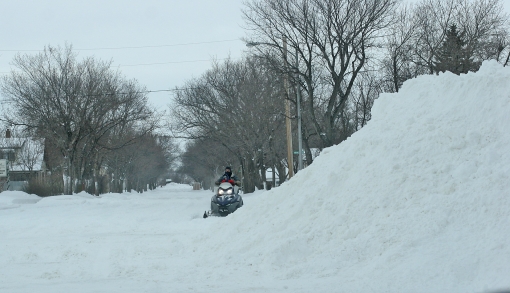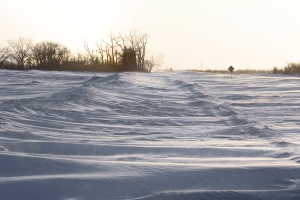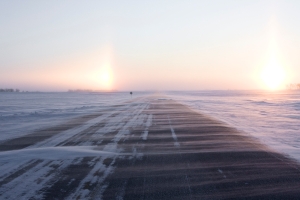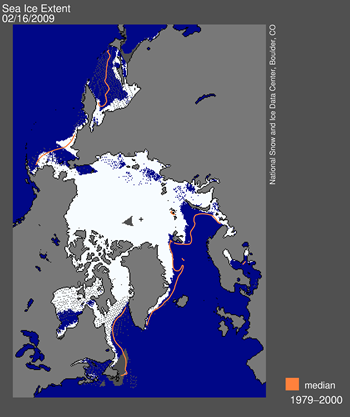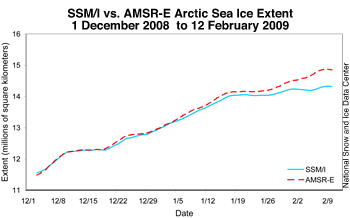
Regular WUWT readers know of the issues related to Arctic Sea Ice that we have routinely followed here. The Arctic sea ice trend is regularly used as tool to hammer public opinion, often recklessly and without any merit to the claims. The most egregious of these claims was the April of 2008 pronouncement by National Snow and Ice Data Center scientist Dr. Mark Serreze of an ice free north pole in 2008. It got very wide press. It also never came true.
To my knowledge, no retractions were printed by news outlets that carried his sensationally erroneous claim.
A few months later in August, when it was clear his first prediction would not come true, and apparently having learned nothing from his first incident (except maybe that the mainstream press is amazingly gullible when it comes to science) Serreze made another outlandish statement of “Arctic ice is in its death spiral” and” The Arctic could be free of summer ice by 2030″. In my opinion, Serreze uttered perhaps the most irresponsible news statements about climate second only to Jim Hansen’s “death trains” fiasco. I hope somebody at NSIDC will have the good sense to reel in their loose cannon for the coming year.
Not to be outdone, in December Al Gore also got on the ice free bandwagon with his own zinger saying on video that the “entire north polar ice cap will be gone within 5 years“. There’s a countdown watch on that one.
So it was with a bit of surprise that we witnessed the wailing and gnashing of teeth from a number of bloggers and news outlets when in his February 15th column, George Will, citing a Daily Tech column by Mike Asher, repeated a comparison of 1979 sea ice levels to present day. He wrote:
As global levels of sea ice declined last year, many experts said this was evidence of man-made global warming. Since September, however, the increase in sea ice has been the fastest change, either up or down, since 1979, when satellite record-keeping began. According to the University of Illinois’ Arctic Climate Research Center, global sea ice levels now equal those of 1979.
The outrage was immediate and widespread. Media Matters: George Will spreads falsehoods Discover Magazine: George Will: Liberated From the Burden of Fact-Checking Climate Progress: Is George Will the most ignorant national columnist? One Blue Marble Blog: Double Dumb Ass Award: George Will George Monbiot in the Guardian: George Will’s climate howlers and Huffington Post: Will-fully wrong
They rushed to stamp out the threat with an “anything goes” publishing mentality. There was lots of piling on by secondary bloggers and pundits.

Feb 15th NSDIC Arctic Sea Ice Graph - click for larger image
Meanwhile, back at the ranch, I got interested in what was going on with odd downward jumps in the NSIDC Arctic sea ice graph, posting on Monday February 16th NSIDC makes a big sea ice extent jump - but why? Then when I was told in comments by NSIDC’s Walt Meier that the issue was “not worth blogging about” I countered with Errors in publicly presented data - Worth blogging about?
It soon became clear what had happened. There was a sensor failure, a big one, and both NSIDC and Cryosphere today missed it. The failure caused Arctic sea ice to be underestimated by 500,000 square kilometers by the time Will’s column was published. Ooops, that’s a Murphy Moment.
So it is with some pleasure that today I offer you George Will’s excellent rebuttal to the unapologetic trashing of his column . The question now is, will those same people take on Dr. Mark Serreze and Al Gore for their irresponsible proclamations this past year? Probably not. Will Serreze shoot his mouth off again this year when being asked by the press what the summer ice season will bring? Probably, but one can always hope he and others have learned something, anything, from this debacle.
Let us hope that cooler heads prevail.
Climate Science in A Tornado
By George F. Will, Washington Post
Friday, February 27, 2009; A17
Few phenomena generate as much heat as disputes about current orthodoxies concerning global warming. This column recently reported and commented on some developments pertinent to the debate about whether global warming is occurring and what can and should be done. That column, which expressed skepticism about some emphatic proclamations by the alarmed, took a stroll down memory lane, through the debris of 1970s predictions about the near certainty of calamitous global cooling.
Concerning those predictions, the New York Times was — as it is today in a contrary crusade — a megaphone for the alarmed, as when (May 21, 1975) it reported that “a major cooling of the climate” was “widely considered inevitable” because it was “well established” that the Northern Hemisphere’s climate “has been getting cooler since about 1950.” Now the Times, a trumpet that never sounds retreat in today’s war against warming, has afforded this column an opportunity to revisit another facet of this subject — meretricious journalism in the service of dubious certitudes.
On Wednesday, the Times carried a “news analysis” — a story in the paper’s news section, but one that was not just reporting news — accusing Al Gore and this columnist of inaccuracies. Gore can speak for himself. So can this columnist.
Reporter Andrew Revkin’s story was headlined: “In Debate on Climate Change, Exaggeration Is a Common Pitfall.” Regarding exaggeration, the Times knows whereof it speaks, especially when it revisits, if it ever does, its reporting on the global cooling scare of the 1970s, and its reporting and editorializing — sometimes a distinction without a difference — concerning today’s climate controversies.
Which returns us to Revkin. In a story ostensibly about journalism, he simply asserts — how does he know this? — that the last decade, which passed without warming, was just “a pause in warming.” His attempt to contact this writer was an e-mail sent at 5:47 p.m., a few hours before the Times began printing his story, which was not so time-sensitive — it concerned controversies already many days running — that it had to appear the next day. But Revkin reported that “experts said” this columnist’s intervention in the climate debate was “riddled with” inaccuracies. Revkin’s supposed experts might exist and might have expertise but they do not have names that Revkin wished to divulge.
As for the anonymous scientists’ unspecified claims about the column’s supposedly myriad inaccuracies: The column contained many factual assertions but only one has been challenged. The challenge is mistaken.
Citing data from the University of Illinois’ Arctic Climate Research Center, as interpreted on Jan. 1 by Daily Tech, a technology and science news blog, the column said that since September “the increase in sea ice has been the fastest change, either up or down, since 1979, when satellite record-keeping began.” According to the center, global sea ice levels at the end of 2008 were “near or slightly lower than” those of 1979. The center generally does not make its statistics available, but in a Jan. 12 statement the center confirmed that global sea ice levels were within a difference of less than 3 percent of the 1980 level.
So the column accurately reported what the center had reported. But on Feb. 15, the Sunday the column appeared, the center, then receiving many e-mail inquiries, issued a statement saying “we do not know where George Will is getting his information.” The answer was: From the center, via Daily Tech. Consult the center’s Web site where, on Jan. 12, the center posted the confirmation of the data that this column subsequently reported accurately.
The scientists at the Illinois center offer their statistics with responsible caveats germane to margins of error in measurements and precise seasonal comparisons of year-on-year estimates of global sea ice. Nowadays, however, scientists often find themselves enveloped in furies triggered by any expression of skepticism about the global warming consensus (which will prevail until a diametrically different consensus comes along; see the 1970s) in the media-environmental complex. Concerning which:
On Feb. 18 the U.S. National Snow and Ice Data Center reported that from early January until the middle of this month, a defective performance by satellite monitors that measure sea ice caused an underestimation of the extent of Arctic sea ice by 193,000 square miles, which is approximately the size of California. The Times (”All the news that’s fit to print”), which as of this writing had not printed that story, should unleash Revkin and his unnamed experts.
